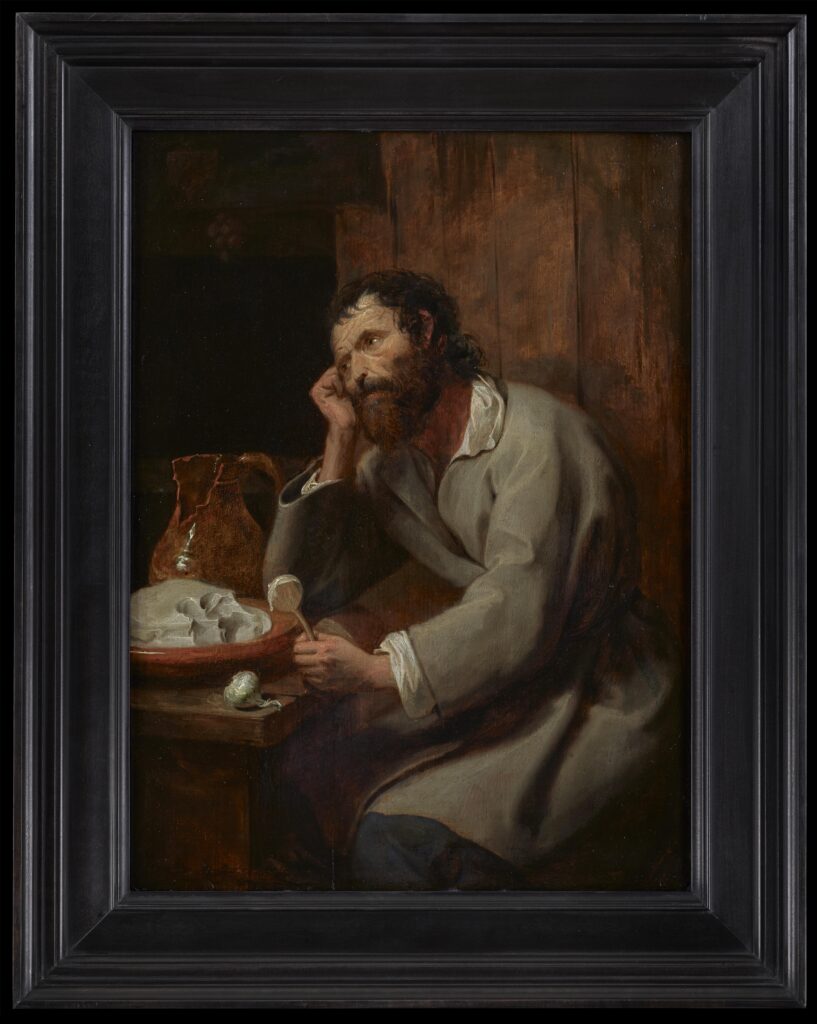David Ryckaert III
1612 - 1661
An Interior with a Man eating Quark Cheese

Medium:
Oil on Panel
Category:
Dimensions:
39(h) x 29(w) cms
Framed Dimensions:
50(h) x 39.5(w) cms
Essay:
David Ryckaert III began his career as a pupil of his father David Ryckaert II and was the nephew of the famous landscape painter Martin Ryckaert. His early works evidently show the influence of Adriaen Brouwer, but later he painted in the lighter, cooler hues of David Teniers II. He was to be elected a member of the Guild in Antwerp in 1636 where he worked for his entire career.
His subjects are comprised mainly of peasant interiors with family feasts, musical parties and general merry making. Less often he painted village surgeons, craftsmen, shoemakers and tailors. Religious and ghostly themes, as in the various versions of the Temptation of St Anthony, interiors with witches and alchemists also play a large role within his artistic canon.
He had an excellent eye for physiognomy and displayed a large range of figure types for his peasants, often with allegorical meanings. Inanimate objects, painted with great care are common features and sometimes form an entire composition - vessels, farming equipment, stores of meat and vegetables often depicted in a barn with a single unobtrusive human figure.
Ryckaert enjoyed a successful career in Antwerp with wealthy patrons including Archduke Leopold of Austria. It was during this period in the 1640s and 50s that his works became less concerned with 'low-life' subjects and moved up the social strata towards scenes of bourgeois life with music parties in elegant settings.
-
This study of character and mood depicts a peasant lost in thought, his hair unkempt and face crinkled with age. He sits at a table, his humble meal of cheese and garlic forgotten while he stares into space head propped up on one fist.
Ryckaert painted other works comprising single peasants personifying worry, the seven deadly sins, the seasons, the five senses, etc. so the present painting may also contain an allegorical theme. The garlic and cheese suggest that the picture might represent the sense of smell. However, the expression and posture of the man, so much like the famous Albrecht Durer print which Ryckaert would certainly have been aware of, suggests that he may personify melancholia.
It is possible that Ryckaert meant this picture's philosophical tone to be satirical. The idea of a melancholic peasant, wooden spoon clutched in one fist like a writer's quill, could be read as a teasing inversion of character types. On the other hand it was not uncommon to represent philosophers as impoverished but dignified stoics.
The cheese, reminiscent of Italian ricotta, is probably quark.
Provenance:
Anon. sale: Phillips, London, 8 Dec. 1992, lot 26.
Private collection, Italy